
10 minute read
A One-Way ticket to Monsterville
Big flies catch big fish – and in this continuation of Matt Harris’ article about the flies and fly tyers that have changed the way we target trophy-sized fish, it’s time to go into depth with some of the essential XL-streamer patterns that have come to the fore.

PART 2
Bob Popovics really changed the way that we think about fly design and opened up a whole new era of possibilities using fresh ideas and materials to create flies that were large, voluminous, yet eminently fishable.
Modern fly-tying owes a great deal to Bob Popovics.
Bob’s Poplips pattern is one of his many brilliant creations, and it is a classic – it has the kind of erratic movement that doesn’t allow those big fish to get that all-important “fix” on the fly, and as a result, it can drive those same fish into a frustrated rage that induces an injudicious mistake.
Perhaps the only problem with the fly is that it is not currently available commercially, but you can find lots more information on various you tube tying tutorials or in Bob’s book.
To see this fly swimming in the water on any of the various short films on YouTube will instantly have you reaching for your vice…
As well as the Poplips, Bob has pioneered the tying of ultra-large, yet ultra-castable patterns, notably his BEAST fleyes. This pattern creates the impression of a really large baitfish, yet despite using water-absorbent bucktail, it remains remarkably easy to cast.
By the way, Fleyes not flies? Read the book….
Another great modern innovator is Blane Chocklett. Along with Popovics, Blane has rewritten the rules on large fly design over the last decade or so.
Blane is well-known for his gummy minnow pattern, which is a killing fly that has caught me everything from brown trout to mahseer to tuna over the years.
However, it is his big articulated flies like the “T-bone” and especially the aptly named “Gamechanger” that are nothing short of revolutionary.
BEAST FLEYE


BEAST FLEYE

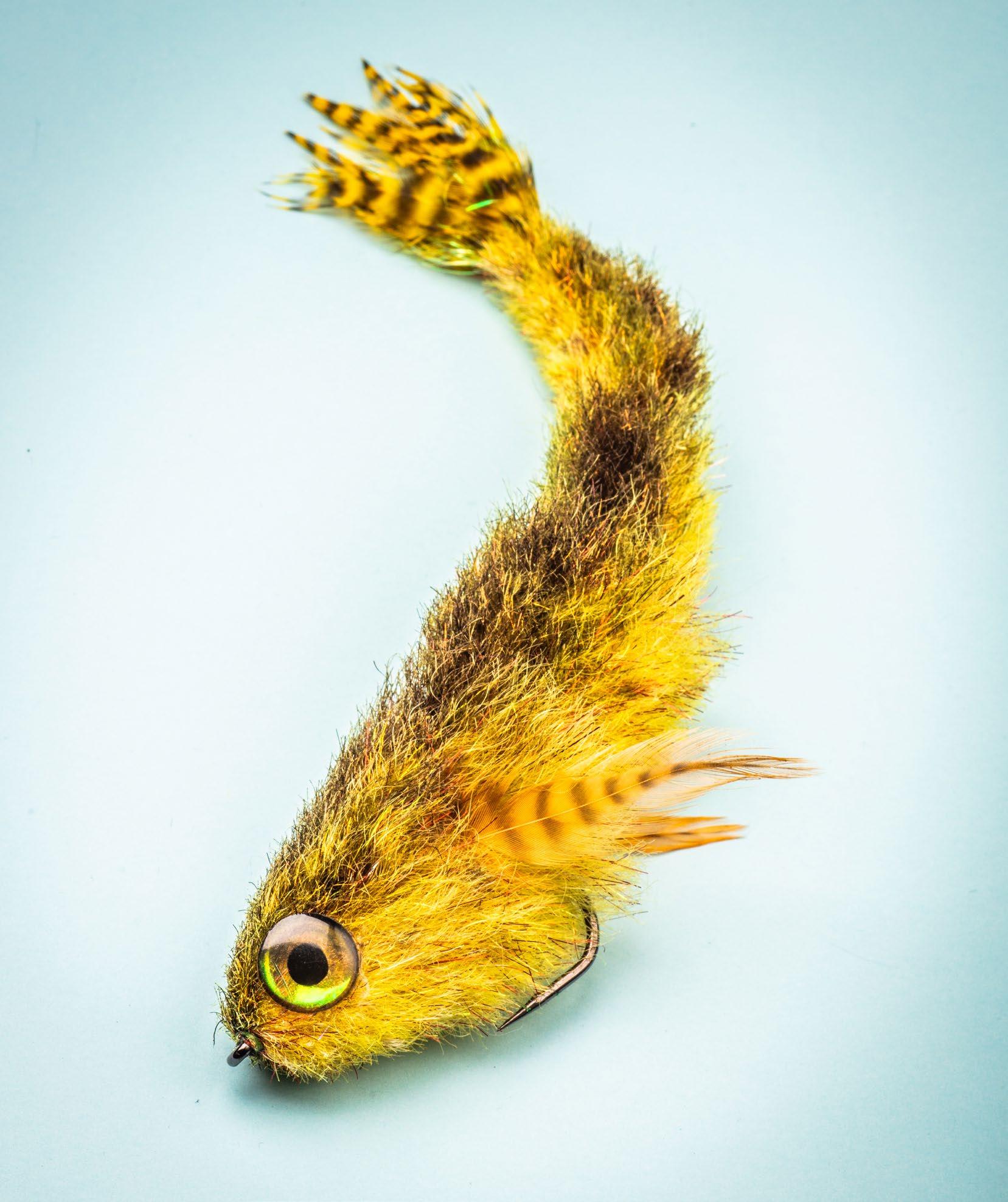
GAMECHANGER The Gamechanger is a brilliant design. Like Popovics’ BEAST pattern, it can imitate really large baitfish, but crucially, Blane uses articulated “spines” that allow the fly’s “spine” to flex and swim in a manner remarkably reminiscent of a live baitfish.
The Gamechanger allows anglers to fish a really big fly very slowly with that all-important erratic movement, and it can often illicit strikes from big, cunning fish that seem impossible to fool with more conventional patterns. Bob Popovics is now experimenting with the ‘spine’ technique, and his huge BEAST fleye tied with Blane’s spine concept is nothing short of a living thing.
My great friend Luciano Saldise was my guide when I first tried the Gamechanger for myself, six long years ago – Lucio laughed when I produced a crudely tied, home-made version of the fly, but it proved an instant success, catching a magnificent 27 pound dorado for us at Untamed Angling’s Tsimane Lodge in Bolivia.
There was more laughter the first time I showed the Gamechanger to my friends, the guides at Untamed Angling’s Trophy Peacock Bass Lodge on the Rio Marié. The big bold chartreuse pattern I had tied up was huge – 10 inches long – and Rafael Costa and the boys were more than a little skeptical.
However, when I showed them the same fly swimming in the clear water at the back of the big houseboat that we were staying on, they were genuinely amazed.
Even when fished at ultra-slow speed, the fly had a sinuous, erratic living action that was unlike any fly that they had ever seen.
Bill, a likeable veteran American angler, was also looking on. He laughed infectiously and pronounced with a grin: “You got yourself a one-way ticket to Monsterville right there!”
The fly didn’t disappoint. It really was deadly, and caught a number of really big peacocks, even when fished behind other anglers that had used smaller, more orthodox patterns.


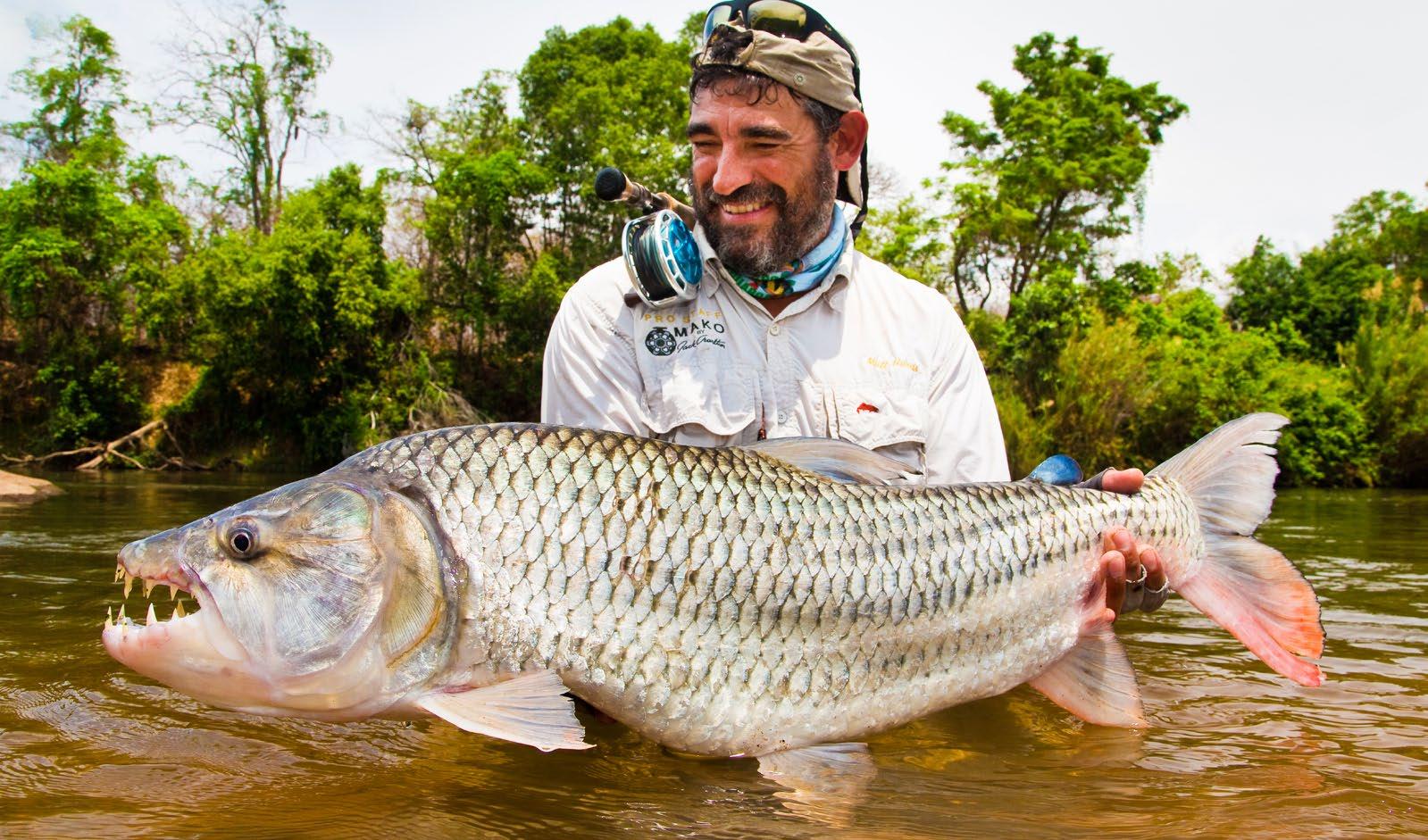
The Gamechanger has since become one of my go-to patterns. As well as dorado and peacocks, It has racked up trophy pike, arapaima and many other big apex predators.
The big tigerfish of the Mneyra and Ruhudji Rivers in Tanzania for instance attack a really big Gamechanger with absolute abandon.
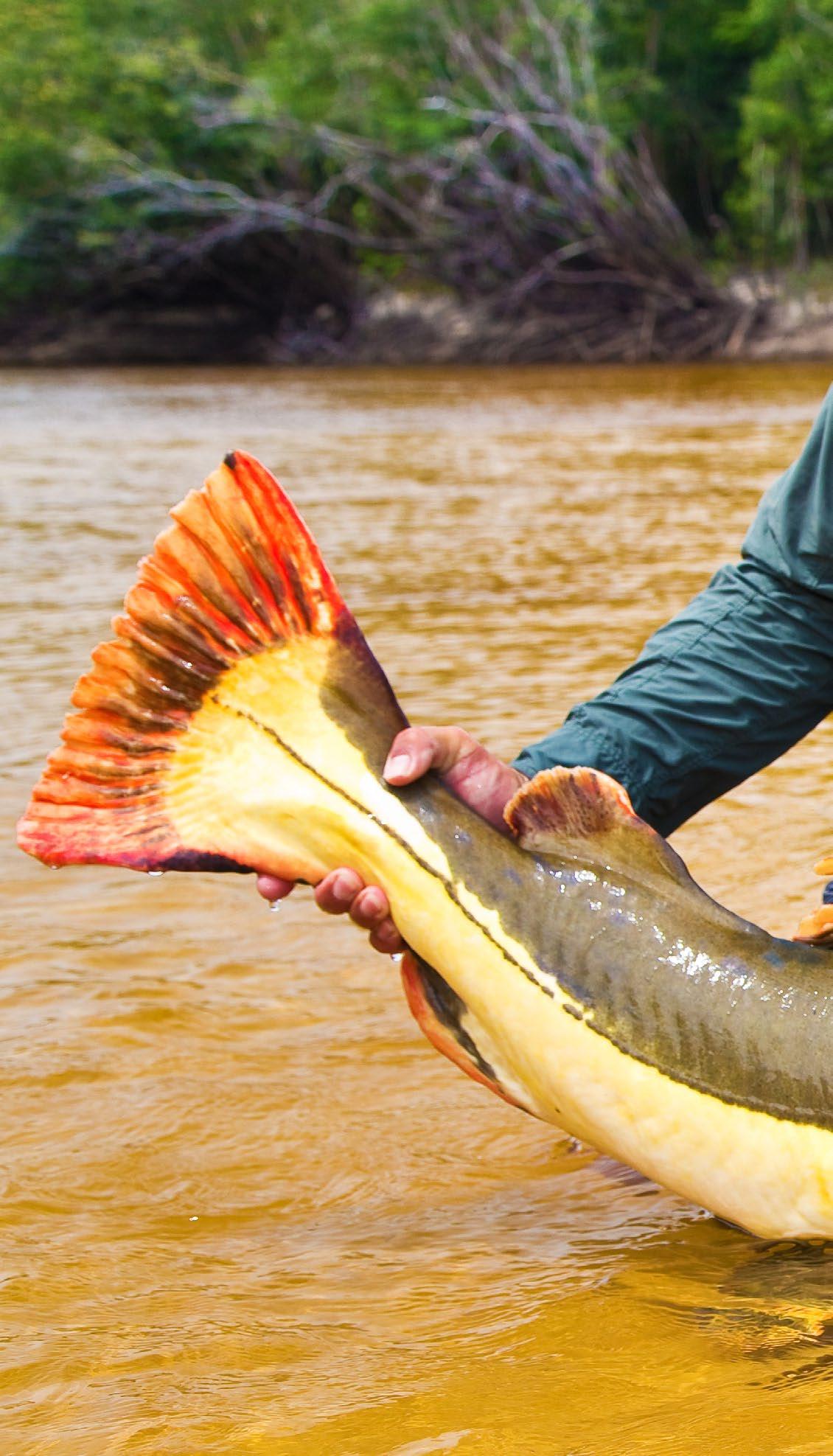
Armed with a built-in rattle, the Gamechanger has even allowed me to sight-fish for targets like surubi and redtail catfish, fish that are normally considered impossible to catch on fly.

There are plenty of Youtube tutorials on tying Gamechangers, but they are a time-consuming tie. Fortunately, The Flymen Fishing Company and Umpqua now both market the Gamechanger in various deadly incarnations, and their versions are excellent, fish-catching examples of Blane’s killer pattern.

However, even Gamechangers and other huge flies like Bob Popovics’ BEAST Fleye can only be tied and cast SO big – how do you mimic something REALLY huge. One way is to adopt the old marketing adage of selling the “sizzle” not the sausage. Unlike a subsurface pattern, a surface fly can make a commotion that resembles a fish much, much bigger than the fly that actually creates that commotion.
There are various patterns that can achieve this. My friend James Christmas’s NYAP pattern – “Not Your Average Popper” – is a brilliant invention. Unlike many poppers it casts very easily – an important consideration when you are wading waist-deep in heavy surf – yet it makes a remarkable amount of commotion for such a relatively small, aerodynamic fly.
I recently asked my good mate Rupert Harvey to ‘pimp’ the fly by creating a “Bling” NYAP – a version featuring a coating of mirage foil, and the combination of mirror-bright flash and erratic, boiling commotion gives the impression of something much more substantial than a hook and two inches or so of foam. Now the fly is visually as well as sonically “Loud”, and it has the potential to draw fish from a long, long way away.

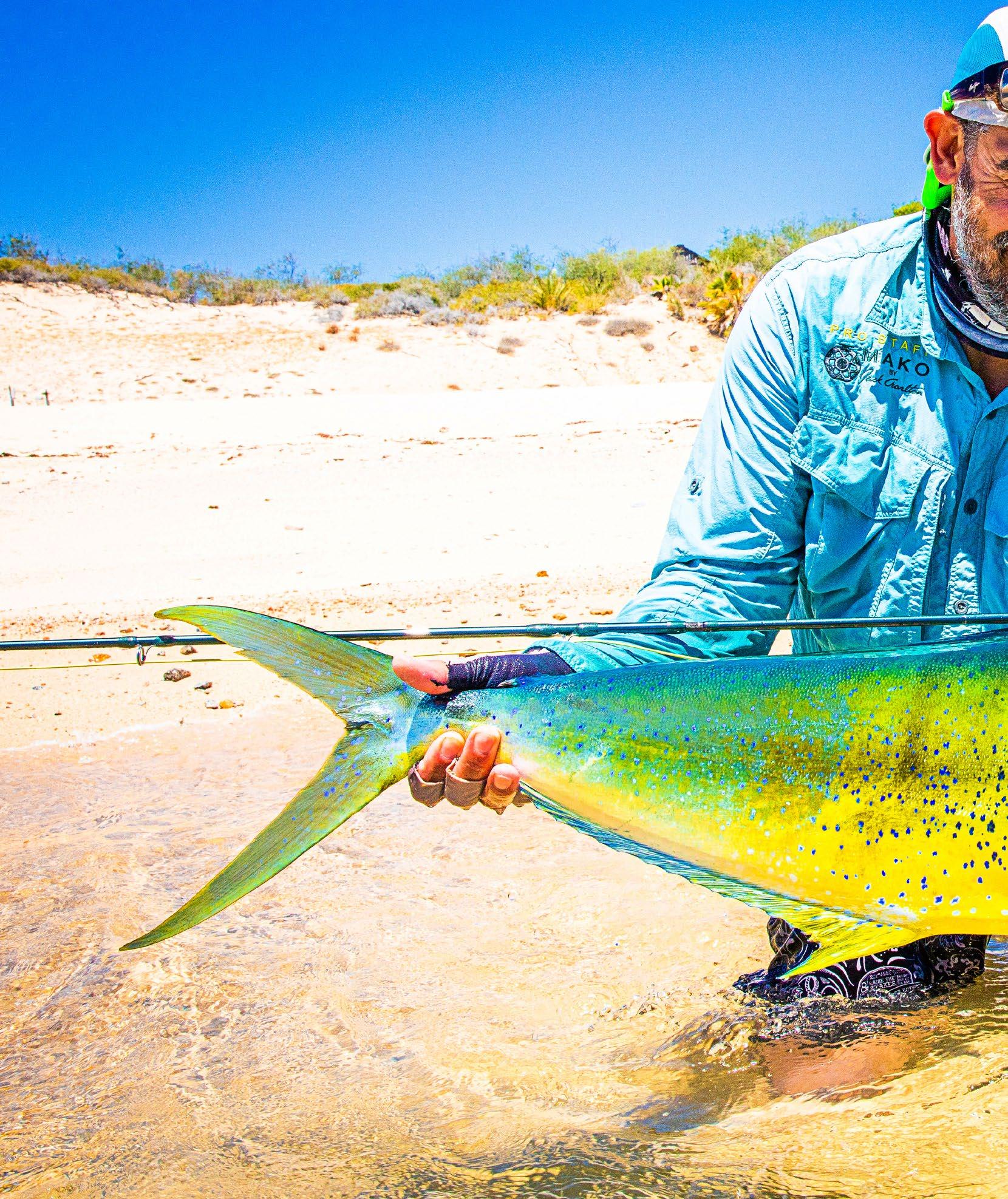
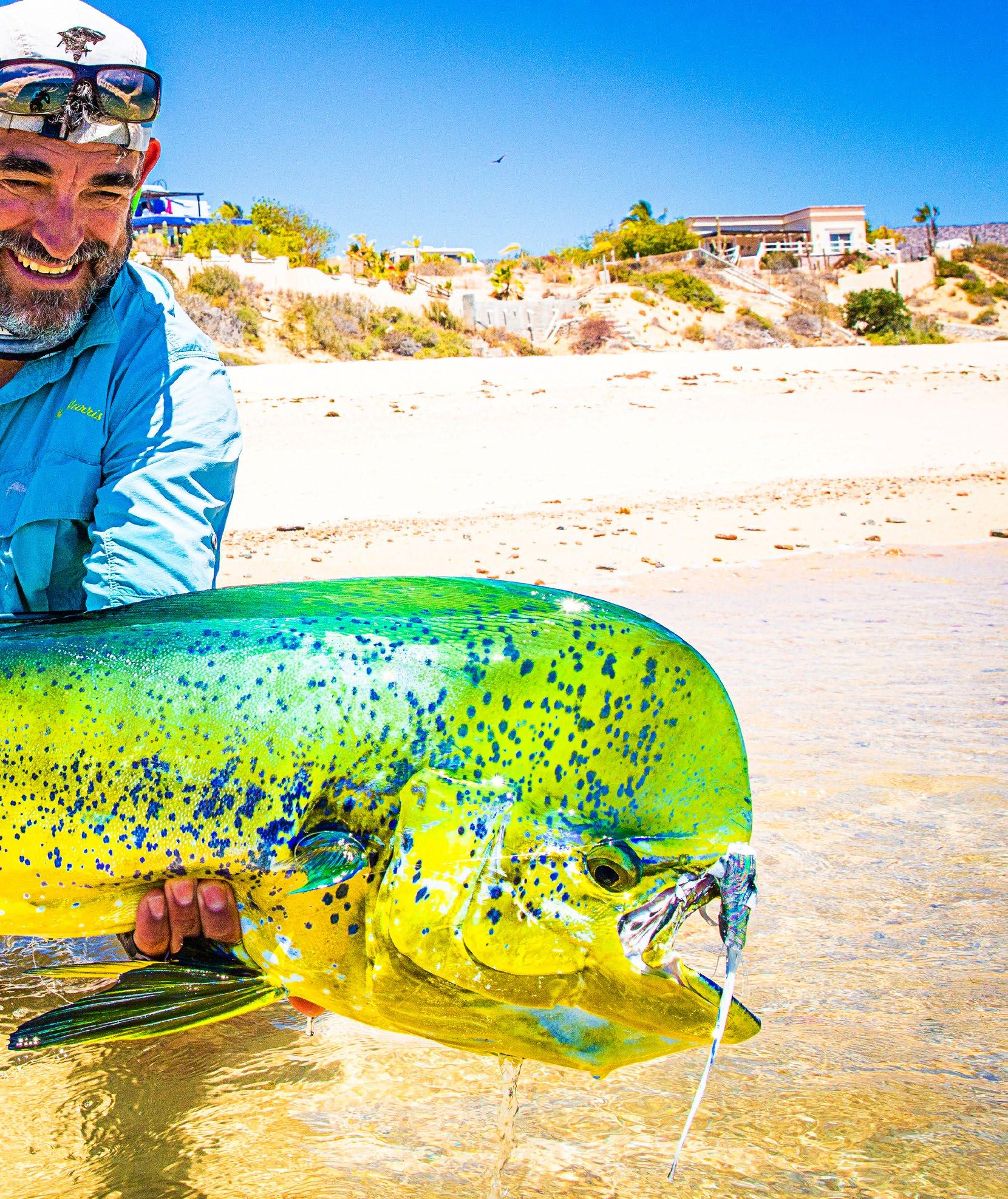

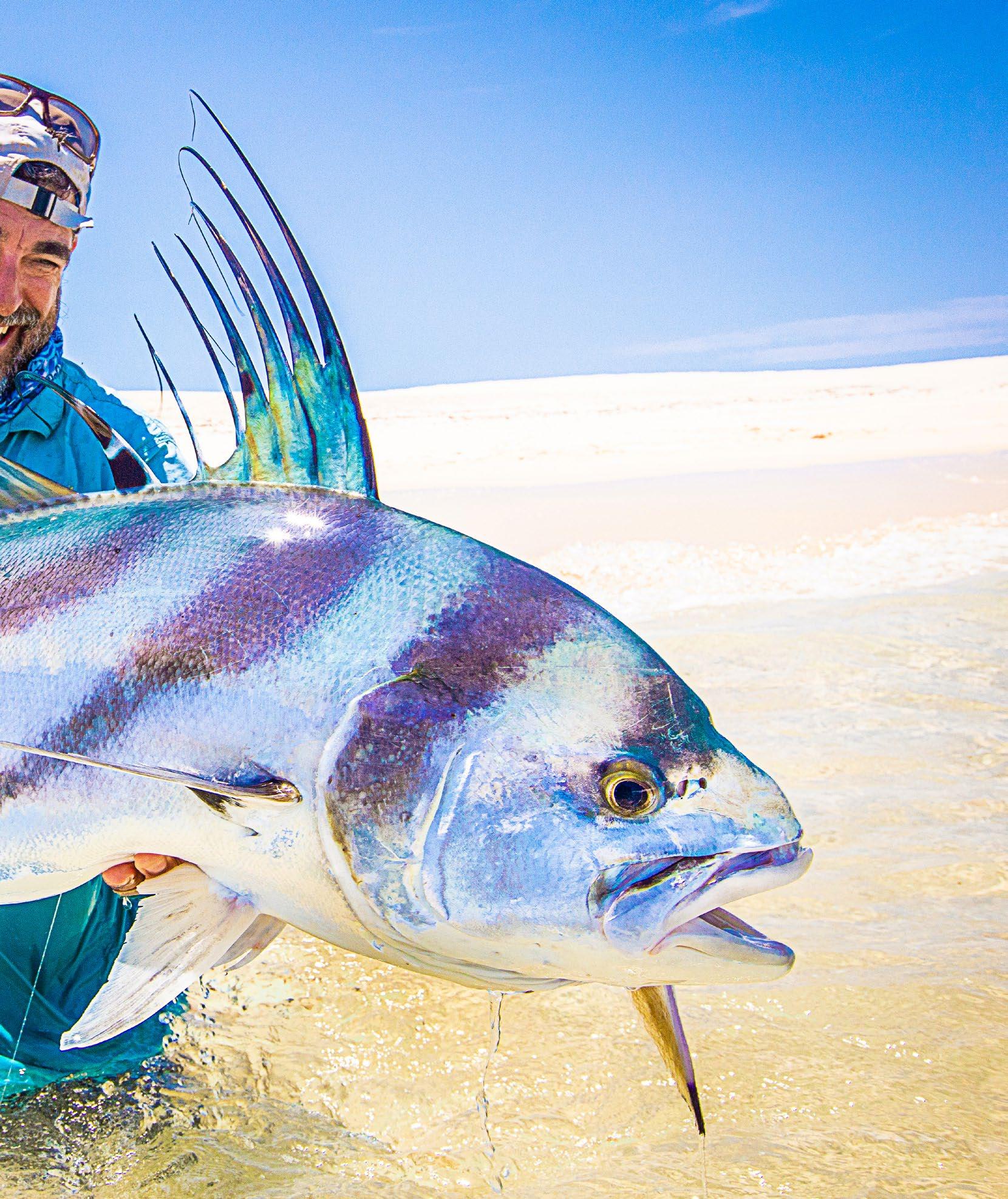
Another really remarkable surface pattern is Charlie Bisharat’s Poledancer, marketed by the Umpqua Fly Company. The Poledancer has the same great zigzag movement as that aforementioned spin fisher’s favourite – the Zara Spook. The Poledancer features an ingenious hydro-dynamic head design, and like the Poplips and the Gamechanger, the fly has an erratic and unpredictable “here and gone” movement that is simply deadly.
The Poledancer can be induced to make an even greater commotion, by using a Floating line with an intermediate “clear tip”.
The clear tip pulls the fly INTO the surface, but the big buoyant head CAN’T be sunk, and instead spurts half a gallon of water into the air every time you strip the fly back towards you. The 5/0 version gives the impression of something REALLY BIG that’s in REALLY BIG TROUBLE. Throw in all that seductive, gyrating mischief and few fish can resist.
The surface takes can be astonishing, and for that reason, the 5/0 Poledancer is singularly the fly that I most love to fish for big, aggressive predators. I cannot recommend it highly enough.

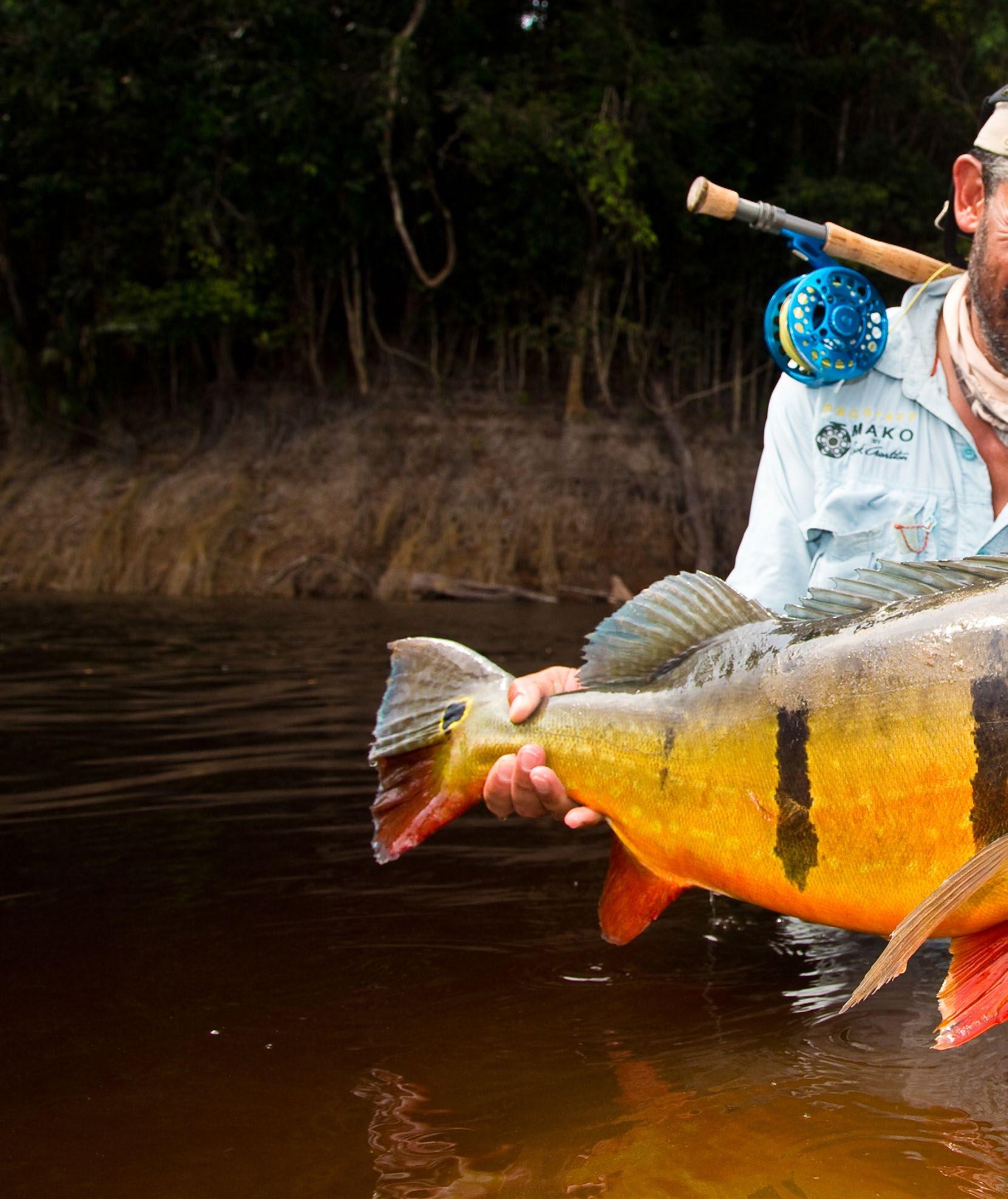
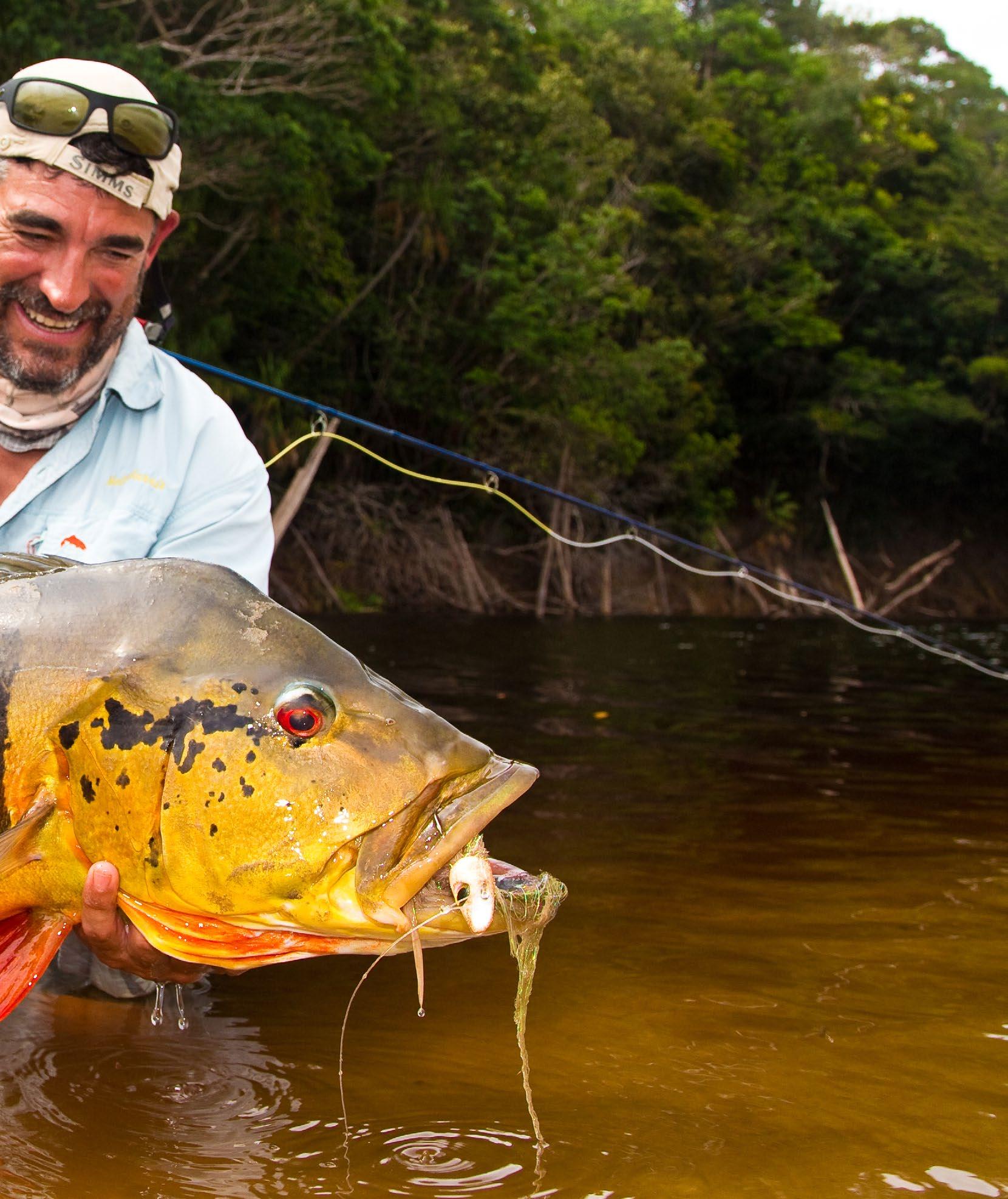
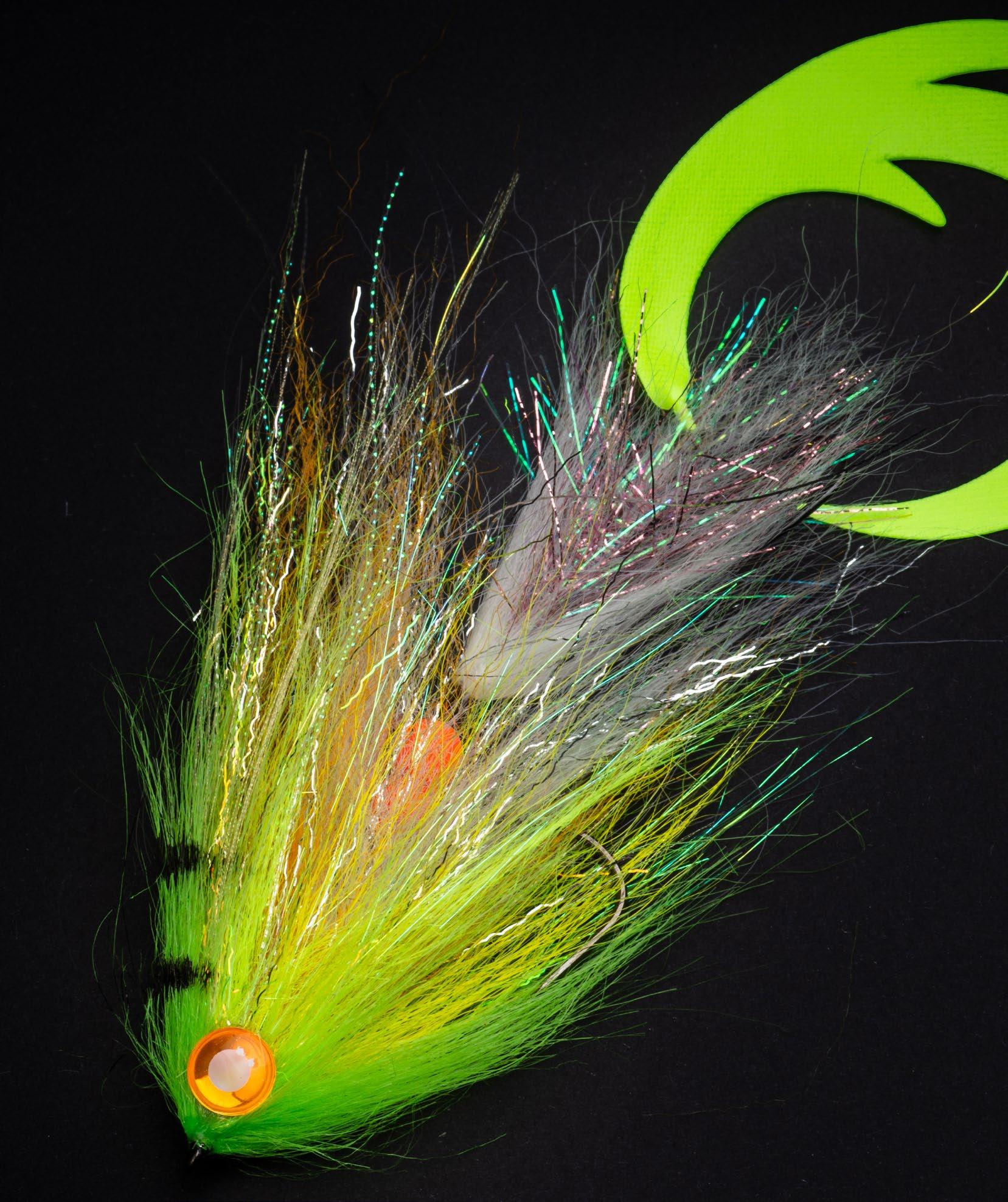
Erratic movement isn’t always the answer. Sometimes the target species – especially big lazy scavengers like pike or arapaima - want big flies ULTRA-SLOW, and often at a straight, constant retrieve that allows them to really check out the fly before eating it.
One answer to this conundrum is to use Paolo Pacchiarini’s brilliant “Wiggletail” system. Wiggletails have life even at extremely slow speeds, and they create a big visual template that provides the required large prey profile. The flickering vibrations that they send out are reminiscent of the lure angler’s “rubber tail jig”. They are easy to cast and can be confidently fished ultra-slow.
Paolo’s recent additions – Dragon tails and Wave tails – can also prove deadly, and by using his quick-change Fastech system, you can quickly change the tail for a larger or smaller version in any numbers of colours and finishes.
Arapaima are incredibly tough to catch on fly. However, they are sometimes – but not always – suckers for wiggletails. The XXL Wiggle-tail in gold makes a fantastic representation of a juvenile arowana, one of the arapaima’s favourite food sources, and IF the fish are keying on them, the wiggletail can be a killer.
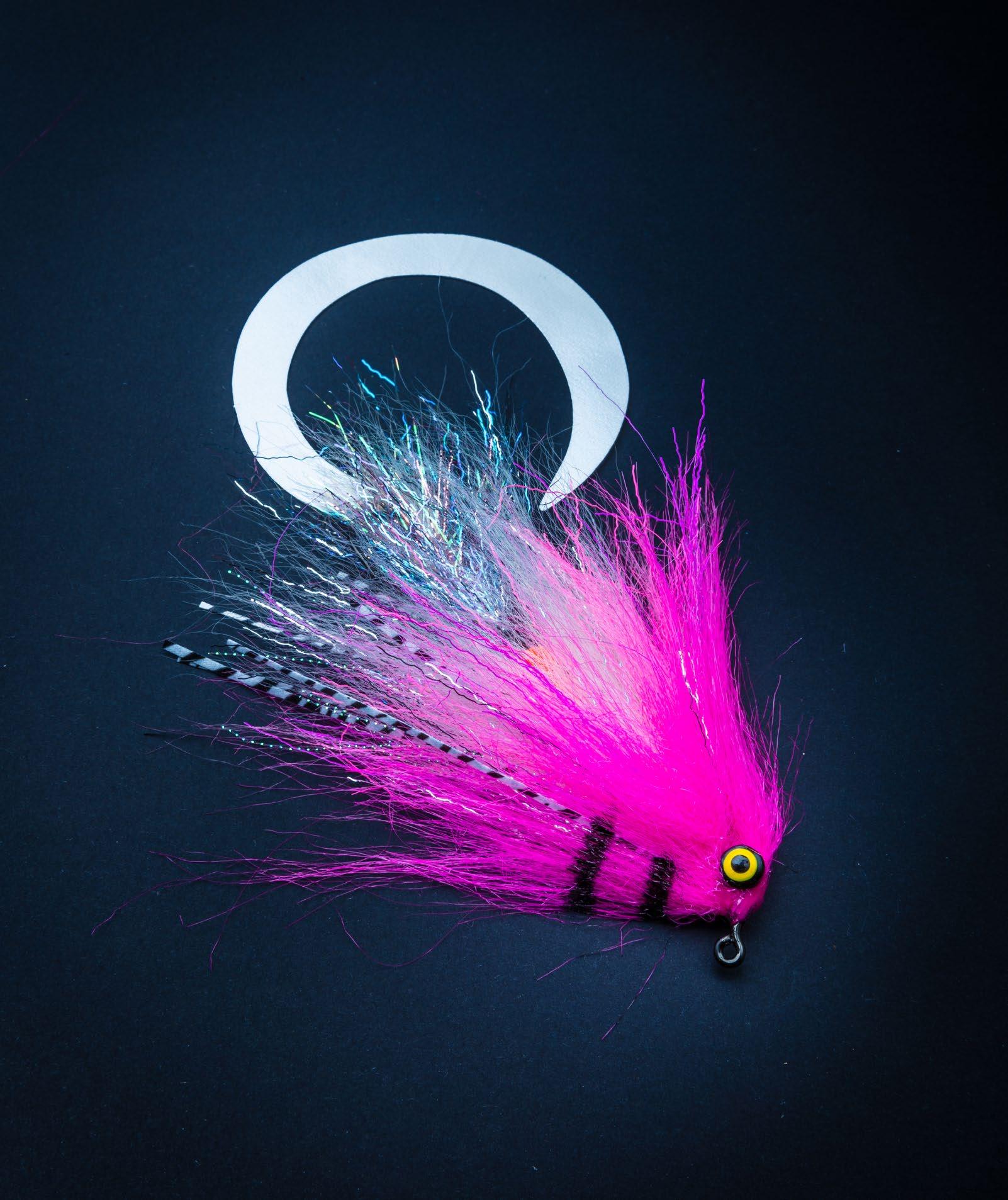



However, keep your wits about you and listen to your guide - if the fish are keying on small sardine- or mullet-type prey, then a pattern like Tomasz Bogdanowicz’s “Tarpon mullet” is a better bet – its construction allows it to be fished ultra slow and it has enough life to fool these big fish even when retrieved ultra-slowly.
Guide Dave Mangan’s ingenious use of kids’ “Squirmle” toys – now marketed as Mangan’s Dragon Tails by Orvis and Veniards amongst others, offers another incredibly mobile option for super-slow presentations, and these tails have a remarkable amount of action even at extremely slow speeds. Crucially, they take just seconds to tie in.
I carry them all in various sizes and colours, along with other simple tails equipped with Pacchiarini fastchange clips constructed from rabbit-fur zonkers, mylar flash and so on, they offer a very quick way to change what you are showing the fish.
This can be great on hard-fished waters where showing the fish something different can make all the difference. Constantly swapping these tails has given me great results at Chilé’s ultra-challenging but ultra-rewarding Austral Kings fishery, where the big resident fish of the hard-fished Manios Pool can take some real persuading.
These ideas and patterns are just the tip of a very big iceberg - there are any number of other fly developments in the making, and combinations of some of these ideas can offer new twists on all of these ideas.
Having great tyers like Rupert Harvey and Tomasz Bogdanowicz as a friend is a real benefit, and being able to talk about specific custom designs allows for a myriad of new experiments.
Rupert and Tomasz have created all kinds of hybrid designs for me – Rupert’s big howitzer poppers with gamechanger bodies and interchangeable tails are just one example of how all of these great new advances can be incorporated into experimental new patterns that really work.

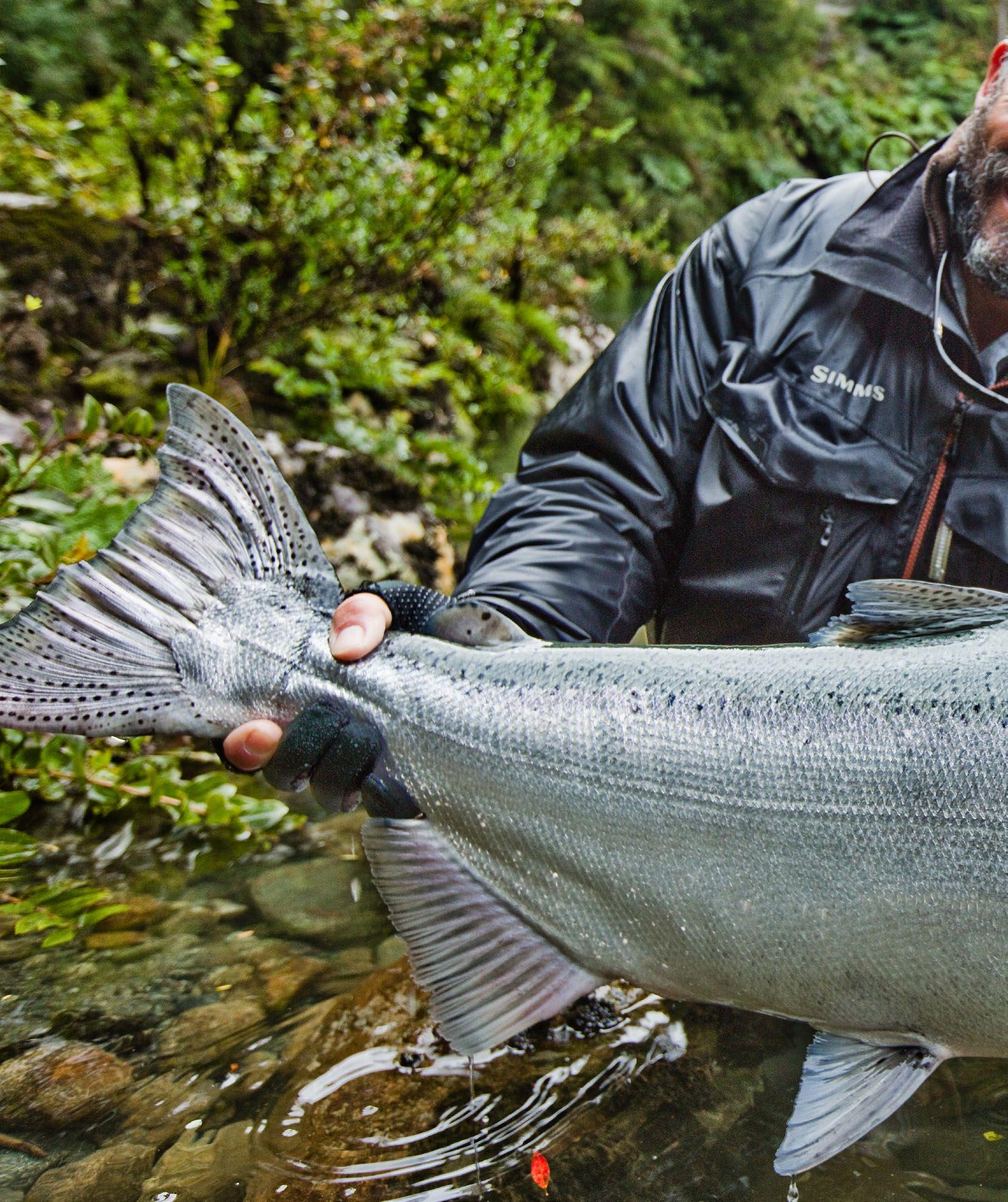


Don’t get carried away with the big fly concept - there are many times when small flies are undoubtedly the best first line of attack - but do yourself a favour - invest in a fast-action, heavy duty rod with an aggressive-taper short-head line, and you will be amazed just how big a fly you can cast.
Beg, borrow or tie some big but castable flies, and, as my old friend Bill would say, go get yourself a one-way ticket to Monsterville.
Matt Harris flyfishes all around the world – if you are interested in joining him on a hosted trip. Contact him at: mattharris@mattharris.com
Or via his website at www.mattharrisflyfishing.com
Thanks to:
Bob Popovics www.facebook.com/bob.popovics
Blane Chocklett www.facebook.com/blane.chocklett
Rupert Harvey www.facebook.com/Ukflies
Tomasz Bogdanowicz/Pike Terror Flies www.facebook.com/piketerror
Alex Rook www.facebook.com/alex.rook.526
Charlie Bisharat www.facebook.com/charlie.bisharat
James Christmas www.facebook.com/james.christmas.50
Umpqua www.umpqua.com
Flymen Fishing Company www.flymenfishingcompany.com









